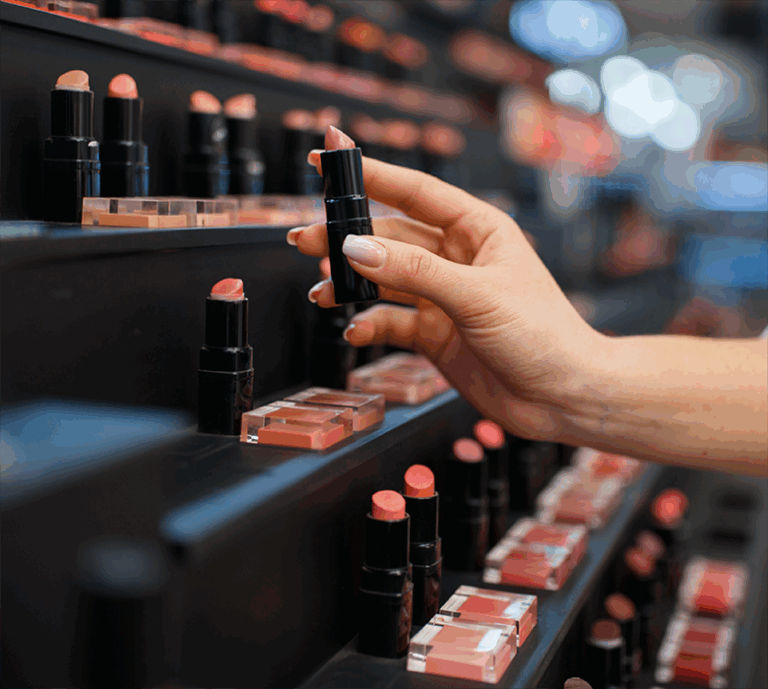×

There’s a growing gap in beauty retail that most brands don’t see coming. Our Director of Strategy, Alexa Jewell Schaefer, shares more in VMSD.

First published on RETHINK Retail, our Director of Strategy, Caitlin Neyer, explores five lessons that physical retailers can learn from TikTok’s success.
If you’re over the age of 25 I’d be willing to bet this headline, or rather simply the use of the name ‘TikTok’, produced an involuntary groan or eye-roll. I hear you and I’m with you – but at the end of the day, there is no denying the extraordinary power that the platform holds.
At 1 billion+ users and counting, TikTok needs no introduction, but a few data points are worth highlighting. As of this writing, TikTok has over 130 million active users in the U.S. who spend an average of 52 minutes per day on the app, opening it 8 different times from sun up to sun down. These are the addiction-level engagement statistics that every brand owner would dream of having. Whether you’ve excitedly jumped in as a creator, reluctantly gone down the scrolling rabbit role, or are an avid abstainer, there is no denying that respect is due for the magnitude of what TikTok has been able to build. Considering the app’s trajectory and cultural influence it would be worth taking down a few notes.
So, what is it about TikTok that is so stellarly special to cause its meteoric adoption? The pandemic is frequently pointed to as the reason the app caught fire. However, people could have turned to Facebook, YouTube, or Instagram as outlets, but they chose to endlessly scroll TikTok for five magnetic reasons – each of which are notable takeaways for physical retail.
The world outside of a 6-inch smartphone screen is a scary place. The demands of life in general, compounded by the state of just about every aspect of politics, healthcare, sports, and on and on, has become a constantly looming dark cloud. The levity of most of TikTok’s content offers a welcoming oasis in an overwhelming world.
With the ease of screen-based shopping ever increasing, the incentives to walk through physical store doors have to be even more alluring than ever before. Retailers must consider what enchanting elements and experiences can be offered that are more compelling than surfing a screen from the comfort of a couch? The role of the physical store must be reconsidered as well as the metrics of success. Where there is science there must also be art, and vice versa.
Props to TikTok’s algorithm for breaking the code on curation. The “For You” landing page makes any desire to explore elsewhere all but unnecessary. From the moment the app is downloaded, it is working overtime behind the scenes to ensure the user never runs out of videos that are most relevant to their specific interests and preferences.
“Personalization” has been the retail industry’s buzziest buzzword for over a decade, yet how much progress has truly been made? Driven by spreadsheets upon spreadsheets of productivity data points, like sales per square foot, it is unsurprising that store experiences generally feel like more of the same to shoppers. In an attempt to push as much product as possible, retailers have lost their way trying to be everything to everyone. Where is there opportunity to build a bridge from the bottom-line requirements of the business to meet the unique needs of each consumer?
Striking a polar opposite balance to the idea of Hyper-Curated, on TikTok you never know what you’ll see next. There is a limitless conveyor belt of content that makes the thumb swipe to see the next snippet second nature and packed with anticipation.
While there are certainly outliers to this statement, many traditional store spaces haven’t evolved enough with consumers’ changing behaviors and interests. The experience within the four walls is still being laid out with such regularity and predictability in planning and product. Yes, for the sake of operations there must be a degree of consistency, but this shouldn’t sacrifice creating distinguishable and unique experiences. Retailers should think about a physical “endless scroll,” and consider how elements of newness can be infused into the journey.
Not only does TikTok offer content relevant to each viewer, but the platform has also built a user-friendly stage empowering all to become creators. As a result, there is opportunity for anyone to have the chance to go “viral” or simply put a message that is important to them into the TikTok universe. The point being here that TikTok, without its viewers turned creators, would be nothing.
The rigidity of retail is in sharp contrast with TikTok’s creator culture. Retailers should be seeking out co-creation with shoppers in a a more organic way, and less of a ‘consumer research’ way. By creating a space that serves as a brand world filled with brand citizens, the two parties could unite to build something mutually successful and beneficial in a continual loop – one of community, creation, and consumption.
Within the realm of TikTok content creation, there is a collaborative hive mentality in which one video can be reinterpreted by a viewer and shared again in infinite succession. The process allows for an abundance of content but also creates an environment where the tools being used – music, clips, phrases, etc. – never feel “been there, done that.” The idea that content can be reused, retooled, and refreshed to create something new is a simple premise with an impactful output.
Digitally based engagements naturally have more flexibility and have the ability to turn over on a dime. Yet physical retail can no longer afford to live by the prototype production line churning out the same stores and same experiences with one customer, or a few segments, in mind. Spaces need to be designed with inherent flexibility and supported with robust sharable programming. The shift from product-led to experience-led and product-supported is a hard jump to make, but not optional in the age of ‘swipe for new.’
While retailers continue to consider what offerings and experiences will increase in-person shopping, TikTok has proved that a certain model can work, regardless of industry. The importance of malleability, collaboration, and personalization have never been more crucial to succeed. TikTok user or not, it’s apparent that in today’s landscape people are looking for forms of escapism that are tailored to their needs and wants. It’s up to retailers whether or not their physical stores can provide that type of environment and in effect drive more foot traffic to their spaces.


